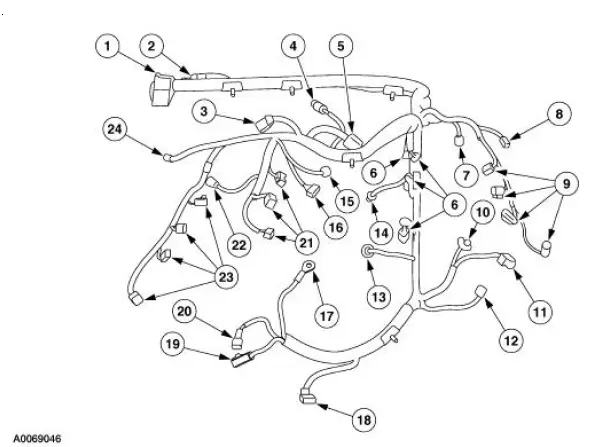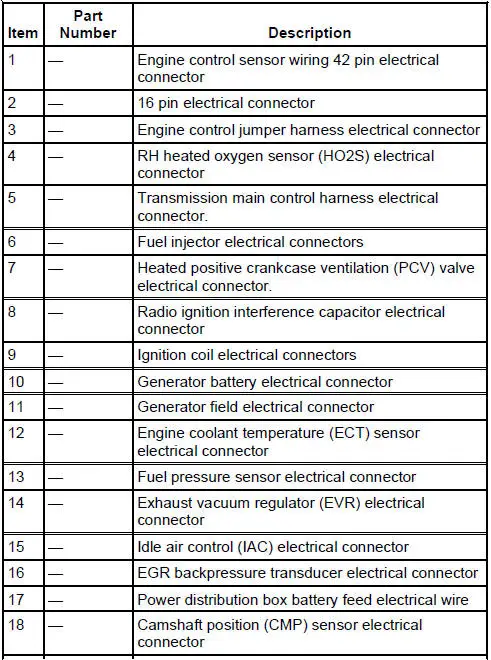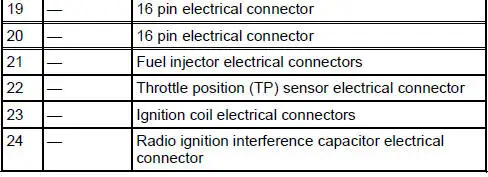Ford Mustang (1999-2004) Service Manual: Fuel Charging and Controls
The fuel injection supply manifold (9F792):
- delivers fuel to the fuel injector.
- receives fuel from the fuel supply line.
The throttle body:
- controls air supply to the upper intake manifold by positioning the throttle plate.
- connects the accelerator cable and, if equipped, the speed control actuator cable to the throttle lever.
- is not adjustable.
- cannot be cleaned.
The fuel injector:
- is electrically operated by the powertrain control module (PCM).
- has an internal solenoid that opens a needle valve to inject fuel into the lower intake manifold.
- atomizes the fuel as the fuel is delivered.
- is deposit-resistant. Do not clean.
The fuel pressure relief valve:
- is used to inspect and relieve fuel pressure.
Fuel Charging Wiring Connections



Fuel Charging and Controls
Refer to the Powertrain Control/Emissions Diagnosis (PC/ED) manual.
Idle Speed Adjustment
Powertrain Control/Emissions Diagnosis (PC/ED) manual
 Fuel Charging and Controls - Mach I 4.6L (4V)
Fuel Charging and Controls - Mach I 4.6L (4V)
General Specifications
Torque Specifications
...
 Throttle Body
Throttle Body
Removal
WARNING: Do not smoke or carry lighted tobacco or open flame of any
type when
working on or near any fuel related components. Highly flammable mixtures are
always present
and can ignite. Fai ...
Other materials:
Disc Check
Special Tool(s)
Brake/Automobile Brake Drum
System with Vacuum
164-R3622 or equivalent
Dial Indicator/Magnetic Base
100-D002 (D78P-4201-B) or
equivalent
WARNING: Dust and dirt present on wheel brake and clutch assemblies may
...
Refrigerant Lines
The condenser to evaporator tube (19835) contains the high pressure liquid
refrigerant upstream of the
evaporator core orifice.
The A/C manifold and tube (19D734) is attached to the A/C compressor, is sealed
with O-ring seals,
and has the following features ...
Checking MyKey system status
You can find information about your programmed MyKeys by using the
information display.
MYKEY DISTANCE
Tracks the distance when drivers use a MyKey. The only way to delete
the accumulated distance is by using an admin key to clear your MyKey.
If the distance ...
